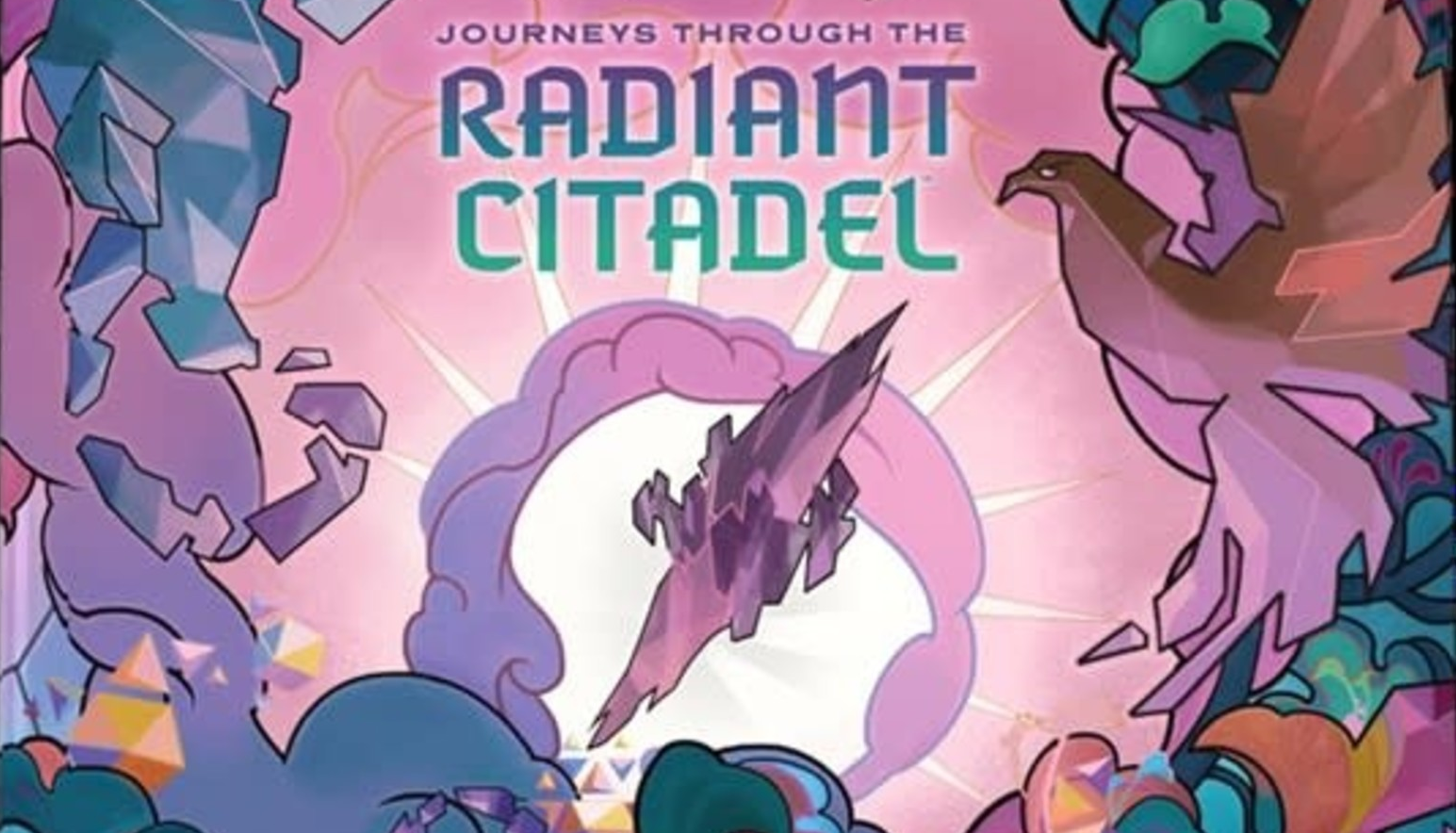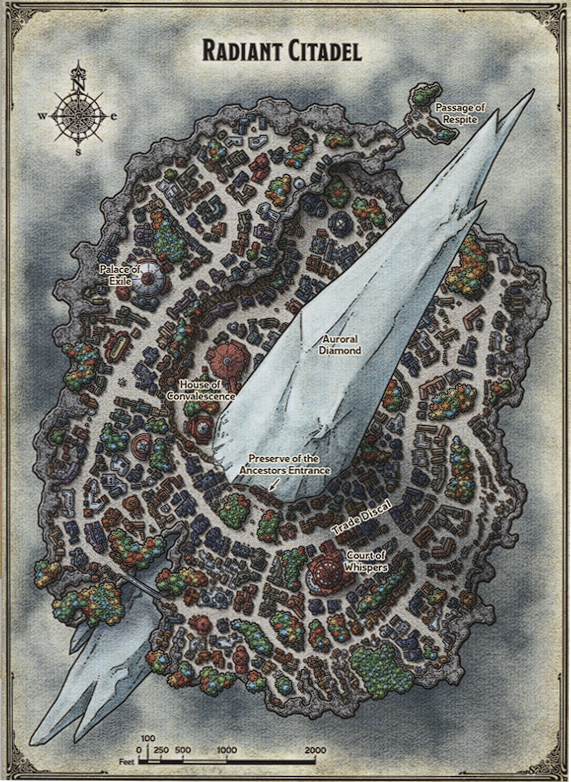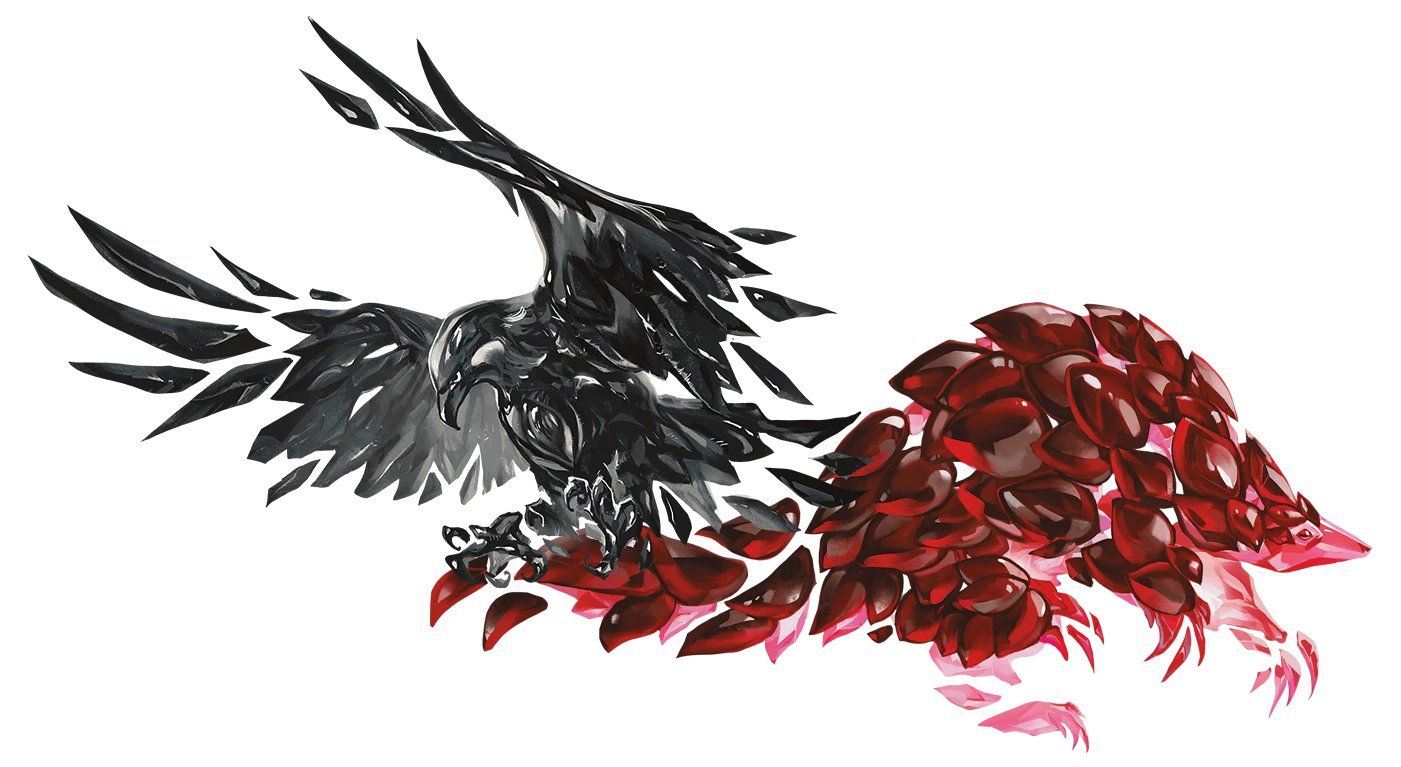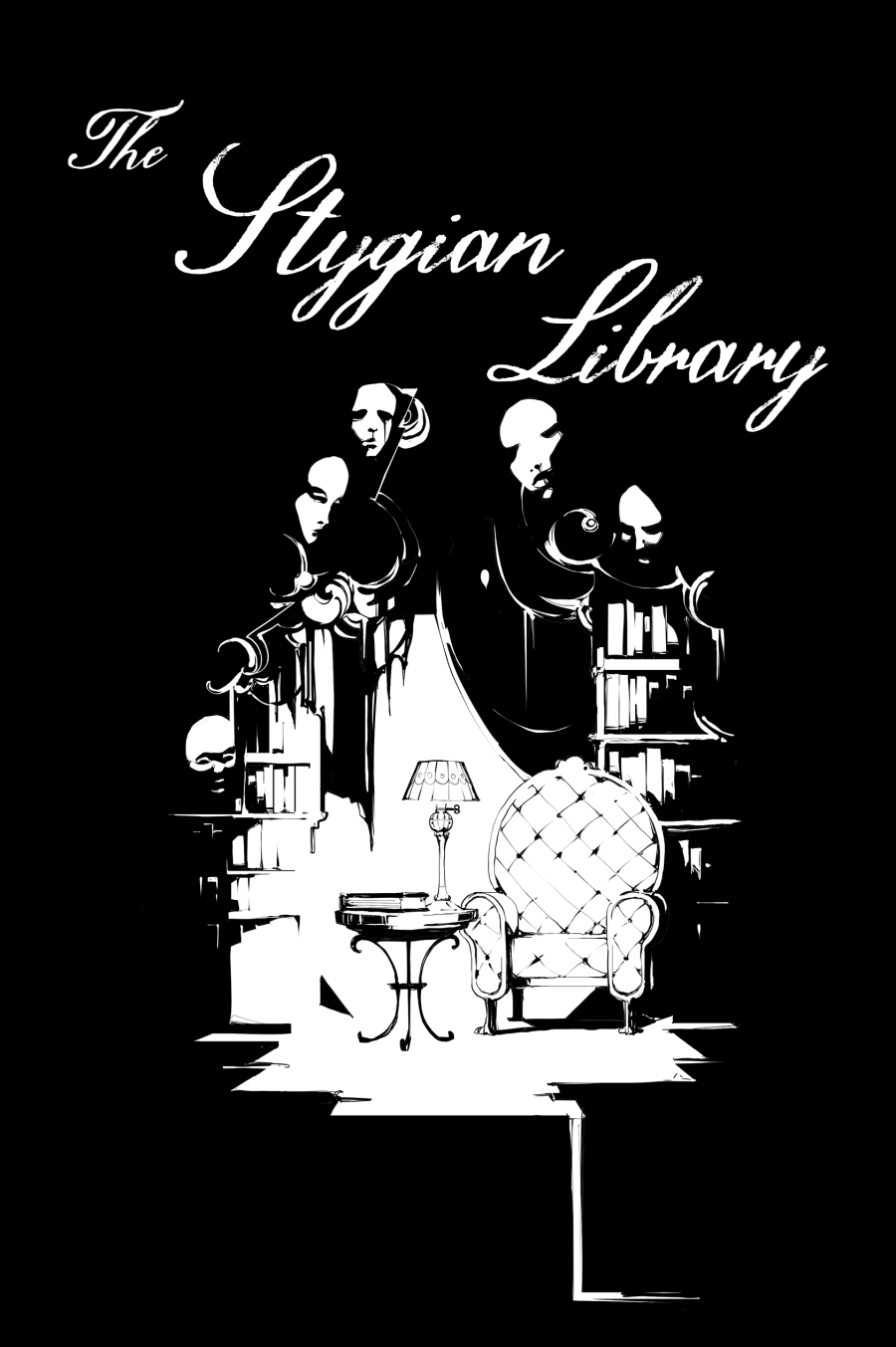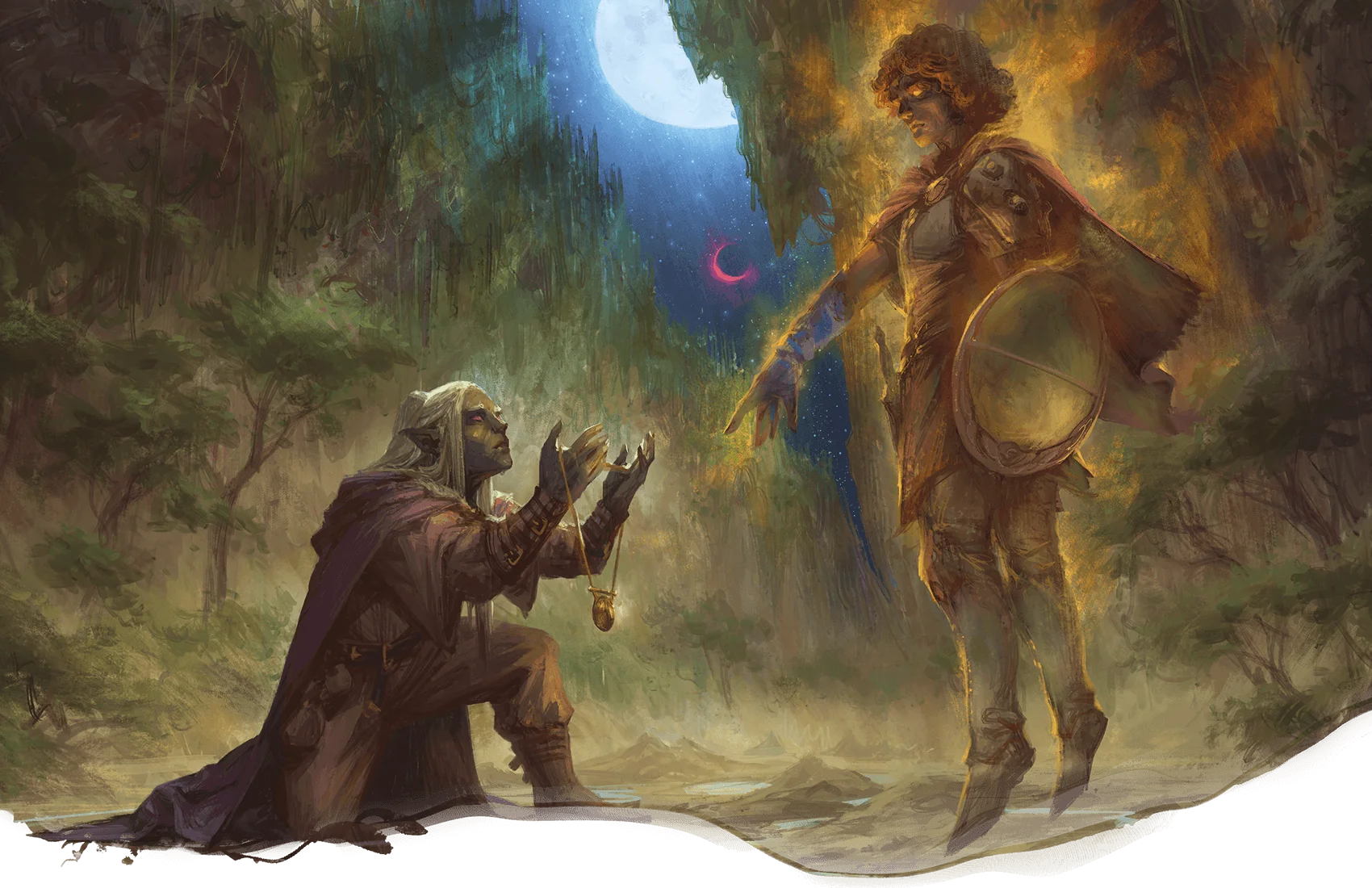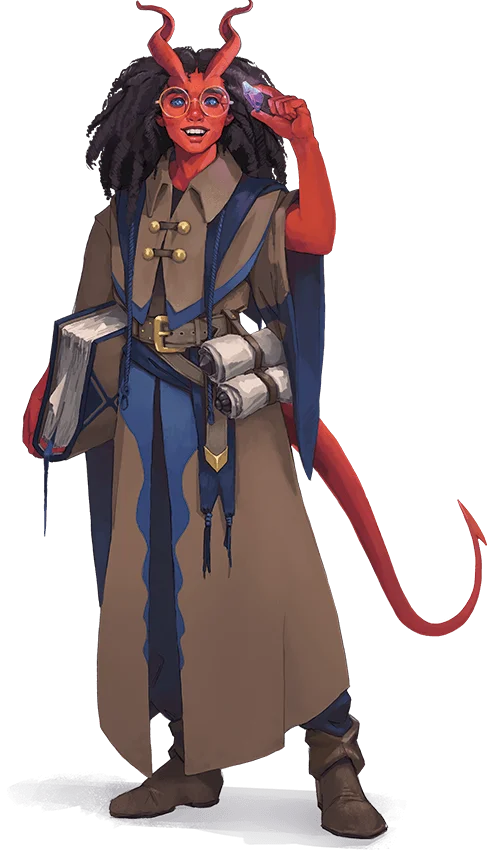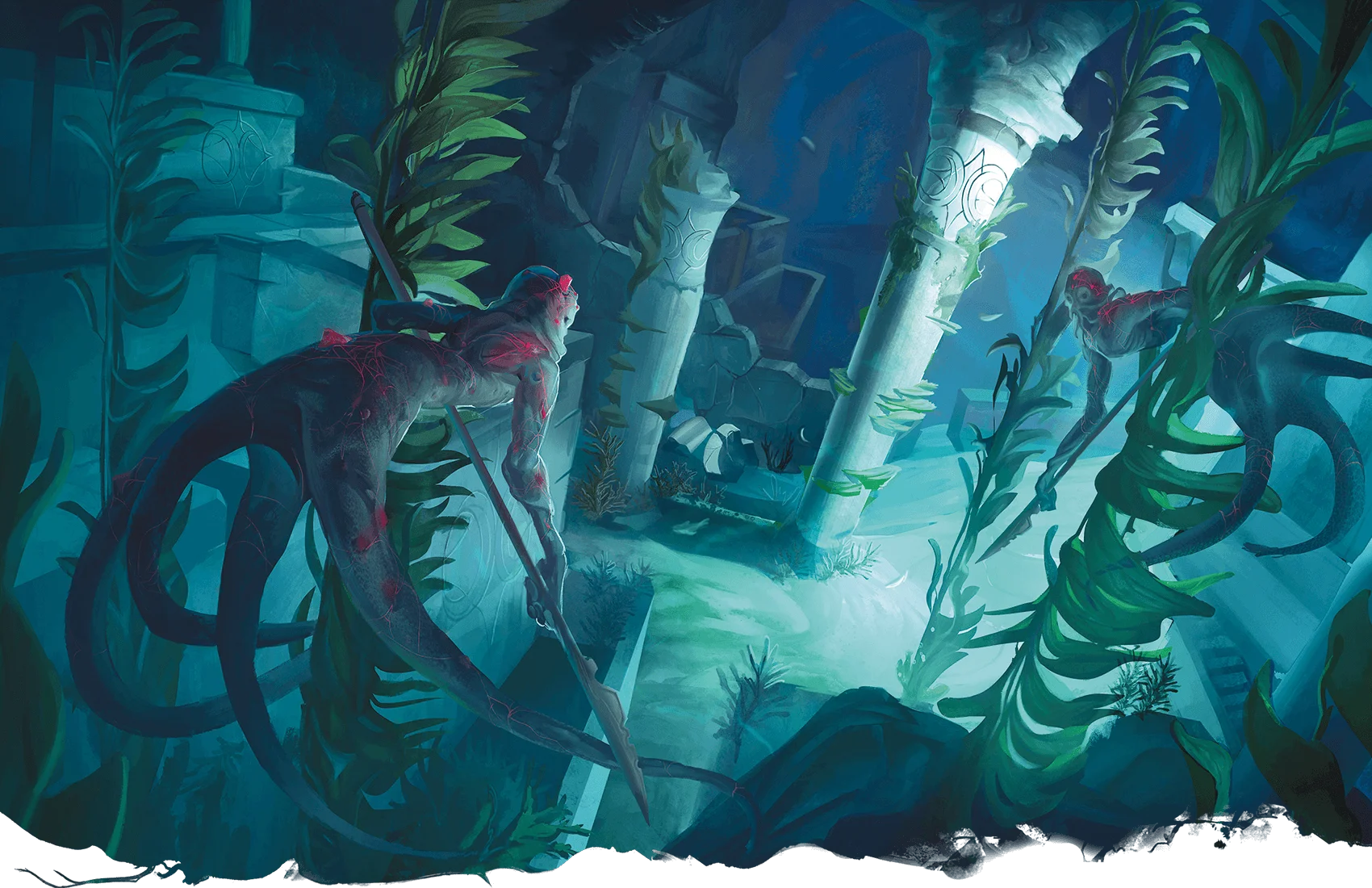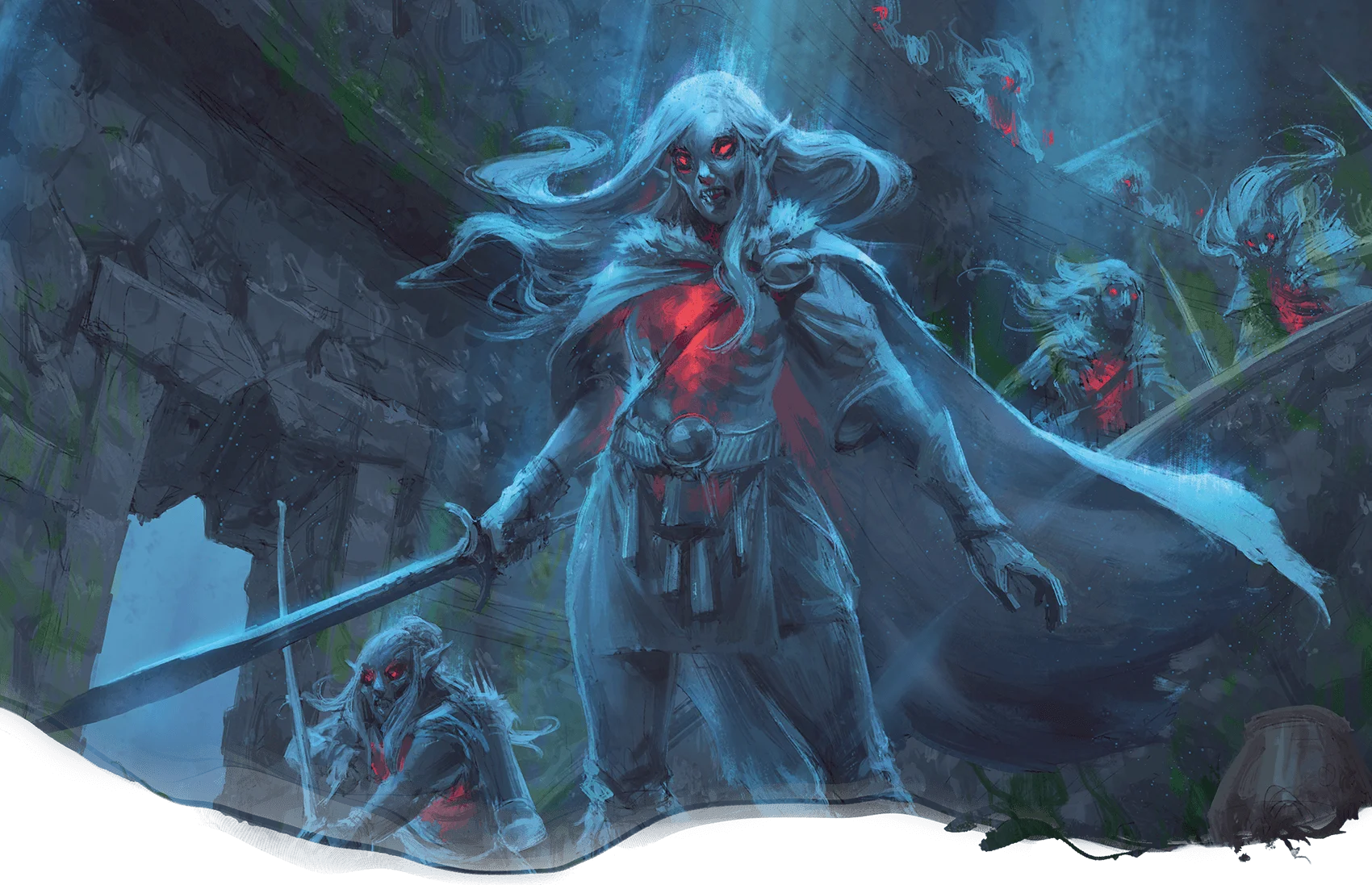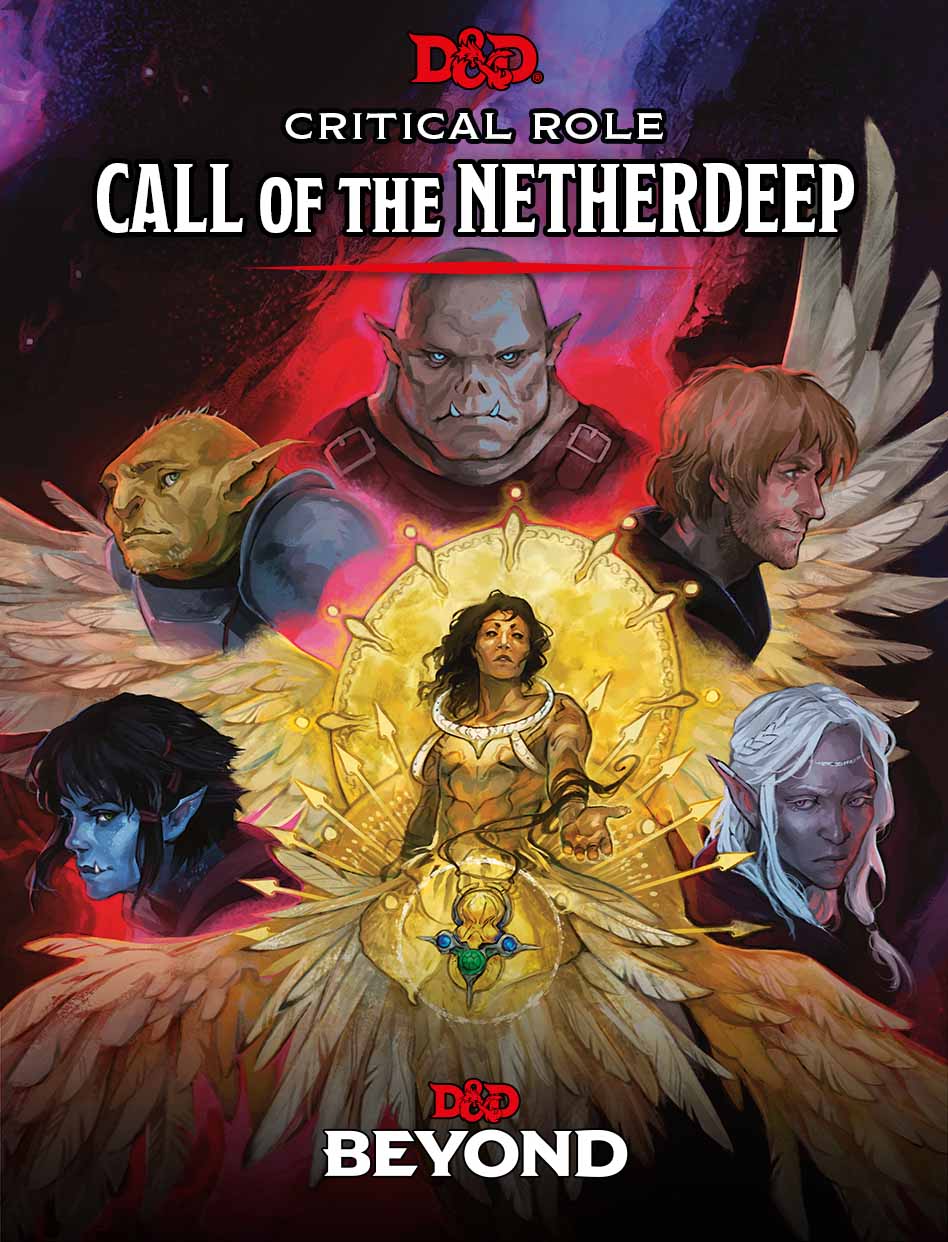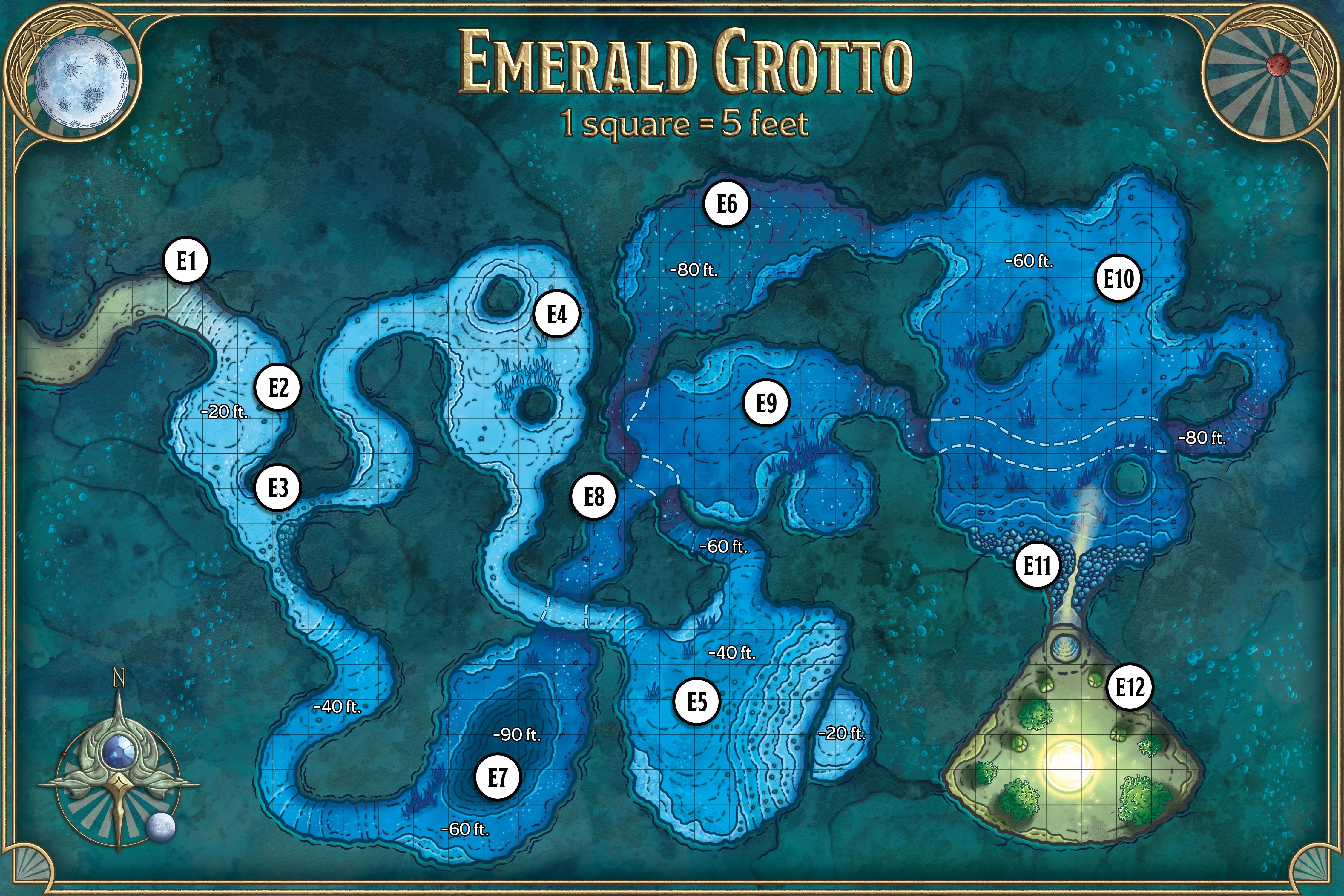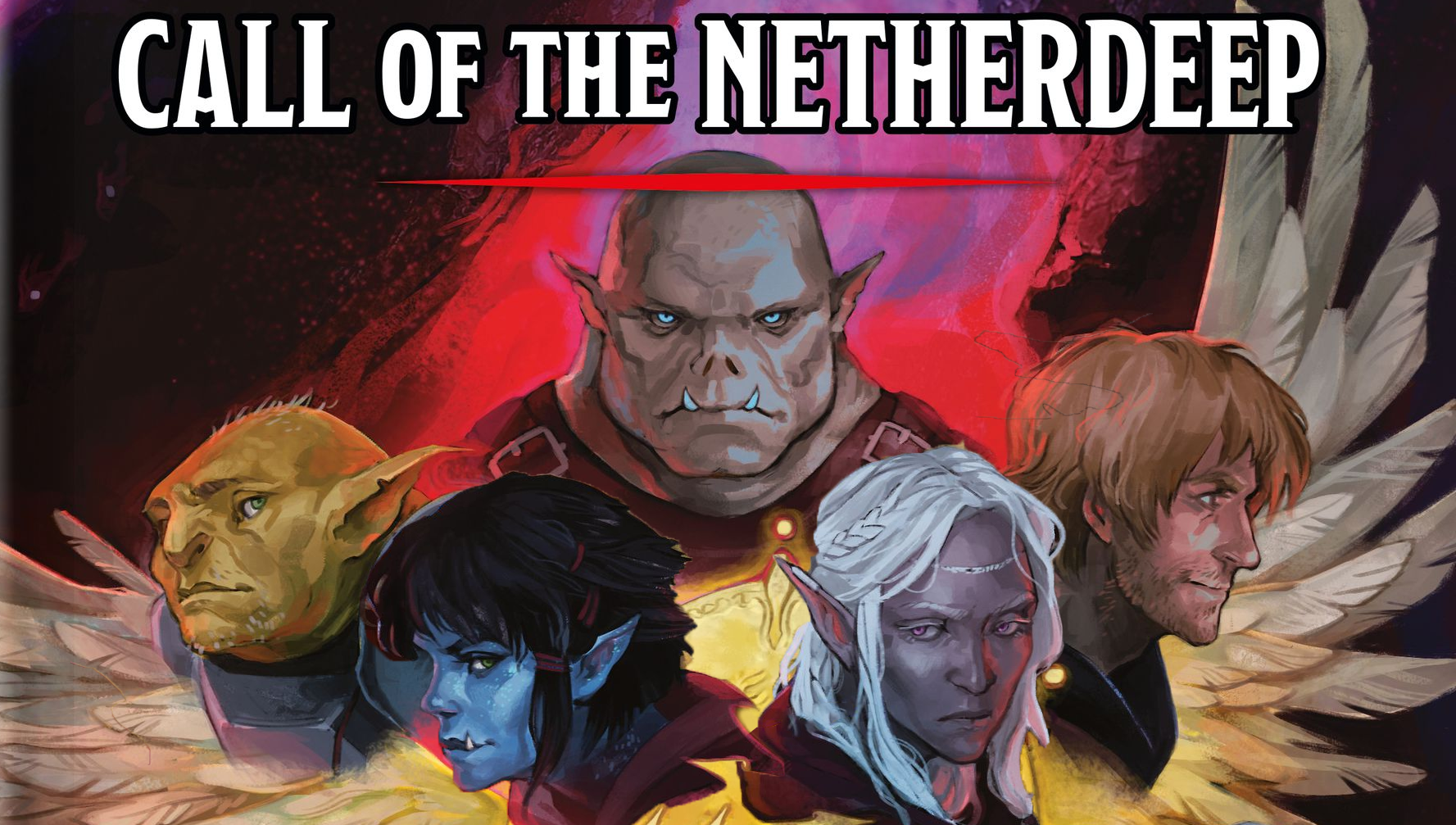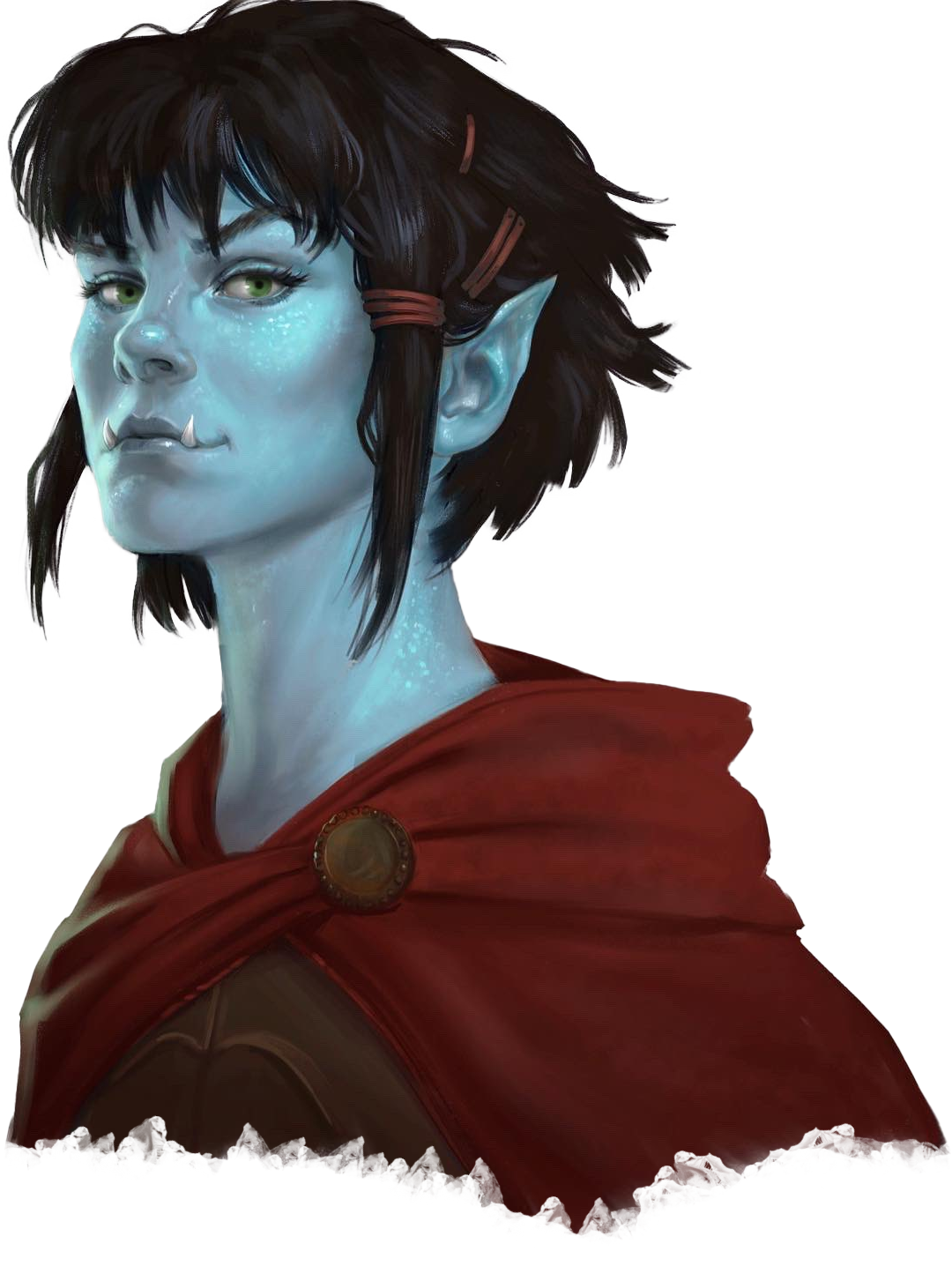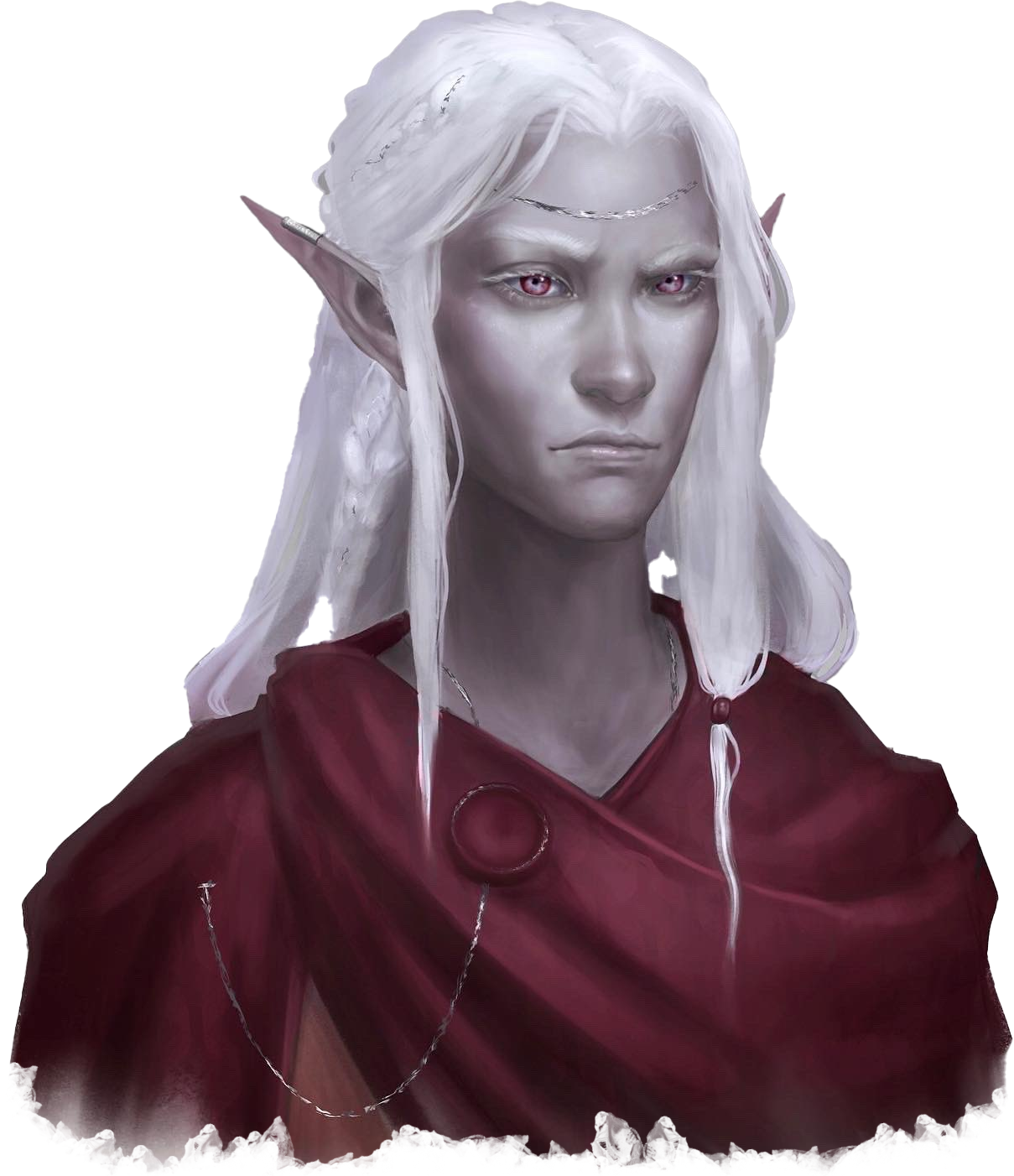SPOILERS FOR JOURNEYS THROUGH THE RADIANT CITADEL
If you go way, way back to the earliest days of D&D, one of the coolest things is just how much of a kitchen sink it was: Read something cool in a fantasy book on Tuesday, get a crazy idea on Thursday, dump ‘em into your game on Sunday.
Over time, the lore of D&D has tended — as the lore of such things often does — to ossify. But the game is still at its best, in my opinion, when the taps are open and the sink is overflowing.
This, of course, brings us to Journeys Through the Radiant Citadel, an anthology of thirteen adventures for 5th Edition D&D, which foregoes the taps and opens the floodgates.
The concept here is that there’s a magical city floating within the Deep Ethereal. A set of giant gemstones-slash-transport vehicles orbit the city and connect it to fifteen civilizations across multiple realities. Each adventure in the anthology takes the PCs to one of these civilizations, effectively slamming open the doors, taking the wildest, most amazing fantasy visions available, and pouring them into a fantasy crossroads where they can all swirl and mix together into a beautiful smorgasbord of the fantastic.
AMONGST THE CONCORD JEWELS
The Radiant Citadel is a “fossil” that’s wrapped around a gargantuan gemstone called the Auroral Diamond. And the 15-page gazetteer describing the Citadel is, if you’ll pardon the pun, the jewel of this book.
Right off the bat, I’m immediately tantalized by the Citadel’s mysteries. (A fossil of what I’d love to have an answer to!) I also love the three-dimensional nature of the city’s spiral.
But here, unfortunately, we run into a bit of friction, because the spiral of the city means that Mike Schley’s map is rather flawed: Because the upper turns are blocking the lower turns, it appears that more than a third of the city is missing.
And, to be painfully honest, this will set something of a theme for the Citadel: What’s included in the gazetteer is fantastic. What’s missing, on the other hand, can undercut a lot of its strengths.
To start with, however, let’s focus on the positive.
Returning to the Auroral Diamond, this is the heart of the city, in more ways than one. It has life-giving powers which blanket the entire city, and it also glows with magical colors. Legend says that each color represents a civilization being born somewhere in the multiverse; and if the color repeats, that civilization has died.
Orbiting the Auroral Diamond are the Concord Jewels. Each jewel, as I mentioned above, is actually a magical transport vessel connected to a separate civilization on one of many worlds. There are twenty-seven jewels in total, each “capable of holding hundreds of people and tons of goods,” but at the moment only fifteen of them are active. At some point in the past, a catastrophe befell the Radiant Citadel and it was abandoned, severing its connection to the great civilizations which were once connected to it. Recently, however, the descendants of some of these civilizations have returned to the Citadel, and they hope that still others can be re-contacted.
The connection between the Citadel and these civilizations is more than just physical. Within the Auroral Diamond is the Preserve of the Ancestors, a liminal space that is one part civic center and one part mystic savannah. Notable here are the Incarnates, such as the obsidian eagle and the ruby pangolin.
Souls of those who die within civilizations linked to the Citadel have their spirits incarnated within gemstones, and these gemstones aggregate together into the Incarnates. Other entities from the civilizations, such as nature spirits, may also be incarnated within the gems. Each Incarnate, therefore, is a gestalt of a civilization’s souls, speaking with the wisdom of centuries, the insight of myriad points of view, and the authority of cultural hegemony.
The incarnates somehow manage to be simultaneously one of the most wholesome and one of the most metal-as-fuck things I’ve ever seen.
There are three major institutions in the Citadel:
- The House of Convalescence uses the Auroral Diamond’s healing properties to create a powerful center for magical healing.
- The Palace of Exiles takes advantage of the Citadel’s existence as a dimensional nexus to provide refuge to the desperate and downtrodden from multiple worlds.
- The Shieldbearers are a search-and-rescue organization that ventures from the Citadel into the many worlds on a wide variety of special ops.
The first two organizations serve as Great Attractors. You can use them to easily justify bringing PCs or adventure hooks to the Citadel. And once the PCs are there, you can hang a full campaign on the concept of being Shieldbearer agents without breaking a sweat.
This is phenomenally precise and insightful design, packing a ton of utility into minimal word count with laser-like precision. You can see similar design instincts being exercised with the NPCs included in the gazetteer. Space appears to be limited, so only a few are described, but they include:
Sholeh, the elder Speaker and brass dragon who’s such a nervous wreck that she neurotically “picks her scales in private as she tries to find relief.”
And also, Arayat, the leader of the shieldbearers. “He bristles against the rules of engagement imposed by the Speakers. He has cremated a hundred fallen comrades-in-arms and seen horrors few can comprehend. The toll has pushed him to his limits.”
This is really subtle worldbuilding and I love it.
Look at our utopia! Isn’t it beautiful and lovely and perfect?
Also, all of our leaders are nervous wrecks on the verge of cracking open like a rotten egg.
… interesting. Very interesting.
A PROMISE UNFULFILLED
In case I haven’t been clear, I really love the Radiant Citadel gazetteer. I love the concept of the setting. I love how much rich detail and flavor gets packed into its slim page count. This Gathering Place of Strangers and Stories is a pure delight. Stunningly evocative. Intensely creative. Packed with dynamic elements ready to explode across your campaign.
But, of course, it’s only a fraction of the content in Journeys Through the Radiant Citadel. The other 200+ pages are dedicated to the thirteen adventures that will take the PCs through a grand tour of the civilizations linked through the Citadel. Each of these adventures consists of the adventure itself, plus a short gazetteer (usually accompanied by a map) that describes the civilization itself, opening it up for further exploration in your campaign.
Unfortunately, there’s a missed connection here. Or, rather, thirteen missed connections.
The Radiant Citadel, as described in its gazetteer, is a collaborative society jointly ruled by its member civilizations. It’s a major hub of trade, linking these civilizations together in a pandimensional society. There are diplomats and embassies. On the darker side, there are references to revolutionary groups using the Citadel as a staging ground for “incursions against their home governments.”
But when you flip over to the setting gazetteers, none of this is true.
There are no embassies. No indication of trade or travel between the civilizations. No suggestion that there is, in fact, any connection between these settings and the Radiant Citadel.
For example, consider the Concord Jewels. These are the vital arteries connecting these civilizations; they are the links through which all trade and travel occur. But although each adventure includes a “Through the Radiant Citadel” section describing where the civilization’s Jewel arrives, this is clearly an afterthought. It’s never depicted on the maps, is almost always located in the middle of nowhere (in many cases there’s not even a road!), and frequently is not even given a specific location (instead just being described as, for example, “within a few miles”).
This would be like arriving at O’Hare International Airport and having the GM describe it as, “Your plane lands in the middle of a small forest clearing. There is no road, but your flight attendant tells you that if you walk south for a few hours you should see some signs of civilization.”
The metaphysics don’t link up any better. For example, I mentioned that the Incarnates are made up of constituent spirits, including the souls of the dead from the founding civilizations. That seems like a pretty big deal, but it’s not reflected in the religious beliefs or customs of any of the civilizations, many of which have completely different (and, in my opinion, incompatible) cosmologies for their afterlife.
Even on the structural level, I’m surprised by the disconnect between the Citadel gazetteer and the setting gazetteers. For example, the Shieldbearers are clearly set up to serve as a campaign frame: Join the Shieldbearers, travel to extradimensional civilizations, meet interesting and exciting people, and save them!
So where are the Shieldbearer scenario hooks? Each adventure includes three different hooks (more on those later), but only one of the thirteen adventures includes one for members of the Shieldbearers.
Obviously what happened here is that the whole book was written at the same time, and there either wasn’t time or a development process (or both) to harmonize everything into a coherent vision. It would be fascinating to see what the original spec sheet for the freelancers looked like: Did the concept of the Radiant Citadel already exist, and simply wasn’t detailed enough for the writers to sync their material to it? Or was the original pitch just focused on the mini-settings and the Radiant Citadel was added later as a bridging device, but without the ability to fully revamp the adventures accordingly?
Regardless, as much as I love the setting presented in the Radiant Citadel gazetteer, the “O’Hare in a forest” problem rather badly undercuts it in actual practice. The easiest solution (recharacterizing the Citadel as a motley assembly of refugees without strong political or economic ties to the individual civilizations) unfortunately moves the Citadel away from a lot of the stuff that, in my opinion, makes it so cool. Going the other direction and keeping the vision of the Citadel intact, on the other hand, would require rather extensive modifications to more than a dozen individual settings.

